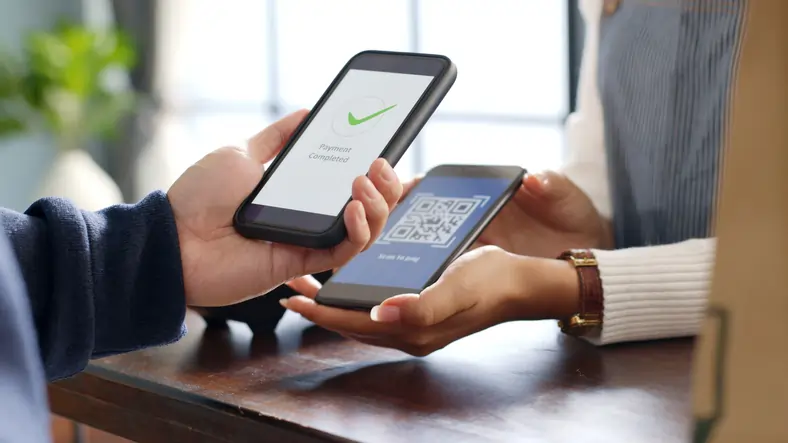
How consumer banking trends are redefining the B2B payments experience

Consumer banking and business-to-business (B2B) payments have traditionally stayed in very separate lanes, but as the landscape of modern finance evolves, the two are becoming more intertwined than ever. So, why the shift? As consumers adopt new payment services and products that their own banks are making – Buy Now Pay Later (BNPL), implementation of AI and further digitisation – they start to expect similar innovations when it comes to doing business. This means businesses must now adapt to meet these evolving expectations.
BNPL
It is safe to say that BNPL has taken the payments world by storm as consumers have found a way to pay for goods and services on their terms. As of 2023, more than one-third (36%) of Brits have used BNPL services, which is more than 19 million people, tripling from 12% in 2021. It provides consumers more flexibility in terms of how they want to pay for goods and services and has been driven in part due to the cost of living crisis. Due to the demand and interest in such services, it is forecasted that between 2022 and 2026, the global BNPL market will grow by £34.8 billion.
With consumers’ appetite for these products growing, those in B2B payments have recognised that their clients see the potential of BNPL in helping to increase their cash flow and flexibility. The speed and efficiency of the service at short notice improves the cash flow for cross-border payments, too. It has naturally influenced B2B payment providers to offer such services to attract those requiring more short-term fixes.
B2B BNPL has also been seen to be more accessible than many other types of B2B loans and financing. Unlike traditional business loans, there are fewer credit checks, and faster credit decisions and onboarding experiences. For SMEs that may not be eligible for conventional business loans, this gives them a great alternative to access funds away from credit. Even the development of payments of FX contracts that can be set out over six months has given SMEs and other financial actors the flexibility to pay on their terms. In doing so, B2B payment providers have instinctively adjusted to the demands of these newer and smaller SMEs that have previously been overlooked. It now gives these smaller SMEs the option to either take the advantages that BNPL provides or to stick and use factoring when paying for goods and services.
The use of Artificial Intelligence in fraud detection
Another trend one must recognise from the consumer side is AI. More specifically, the successful deployment of this type of intelligence can be seen through detecting fraudulent behaviour. Consumer banking has been targeted by fraudsters attempting to exploit vulnerabilities in financial systems. Incoming rules around authorised Push Payment (APP) fraud have increased the incentive for payment providers to push forward with AI to stop such fraudulent activities. Those that have already deployed AI have seen great results in analysing and identifying large quantities of data that may suggest questionable behaviour.
As consumer banking leverages AI to set higher security standards, B2B payment systems are integrating these practices to ensure safe and secure electronic transactions. Through the encompassment of such technologies, B2B payment services have been able to use predictive analytics, helping to build customer profiles and predict future customer behaviour. In doing so, providers can spot fraudulent activities quicker and protect sensitive business data and financial transactions without manual intervention.
The digitalisation of payment services
Lastly, it’s essential to recognise the notable shift towards digitalisation that consumer banking has undergone, which has helped influence how the B2B payments space operates. The convenience and efficiency of digital payment platforms has set new standards for speed, security, and user experience. Instant payments and real-time transaction tracking, for example, offer transparency and efficiency which was previously unattainable. Such pickup towards online services is widespread, as 90% of Brits in 2022 used online banking, an increase from around one-third in 2007.
Due to this trend, B2B payment providers are embracing this digitalisation, with businesses leveraging platforms to streamline their payment processes, reduce manual work, and expedite transactions. At IFX Payments, we’ve embraced this digital revolution by developing our multi-currency account called ‘ibanq’, which is integrated directly into our foreign exchange services and global payments network. This offering has reshaped our business, resulting in the processing of £15 billion of payments volume and £6 billion of FX volume in the last year, with over 2,000 clients using the service.
B2B payments should embrace lessons learned from the consumer space
The evolving landscape of consumer banking is reshaping B2B payments in fundamental ways through the integration of BNPL, AI in fraud detection, and the digitalisation of payments. These trends are not only streamlining B2B payment processes and improving the efficiency of their operations but are also revolutionising the financial interactions in the sector. The consumerisation of B2B payments is here, and adapting to these consumer banking trends is imperative for businesses to remain competitive and efficient in the dynamic world of B2B transactions.


